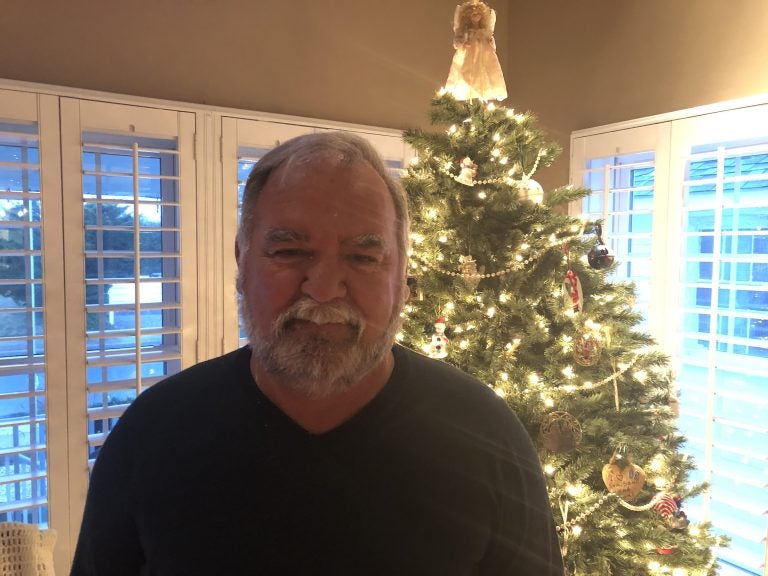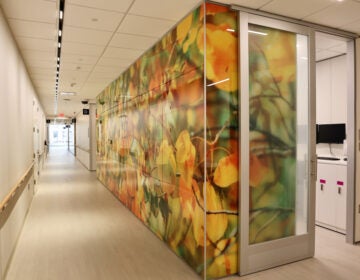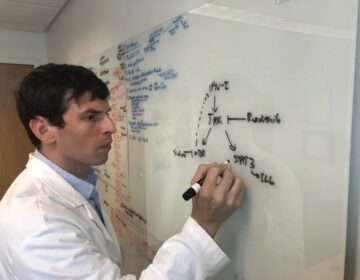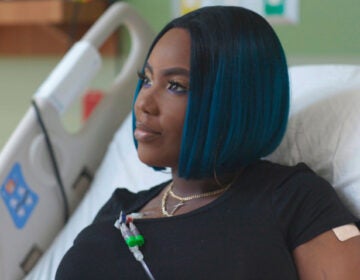The doctor will see you now — and you, and you, and you
Group appointments of six to 10 patients are becoming more popular for certain chronic conditions in Philadelphia area. People benefit from sharing their common experiences.

Steve Carey of Wildwood Crest, New Jersey, has found that shared appointments with other patients trying to manage their Type 1 diabetes have been very helpful. “You don’t feel alone with the problem you have,” he says. (Provided)
Steve Carey had been going to a Cooper Hospital medical office in Cherry Hill, New Jersey, for about 10 years to manage his Type 1 diabetes. But he wasn’t getting much out of his visits, and his diabetes wasn’t under control.
So, a year and a half ago, his doctor proposed a new idea: sharing an hourlong appointment with five other diabetics.
“He said, ‘Try it one time, and if you don’t like it, we can go back to the normal visit,’” Carey said.
He gave it a try. He showed up for his appointment, had his vitals taken by a nurse, discussed his medications with a nurse and medical educator, then met with the other five patients and his doctor to ask questions and go over any new information.
He was surprised at how much better he felt afterward.
“A lot of times you think when you have something like this you’re alone,” he said. “But you find out that there’s a lot of people with it and have some of the same issues that you have.”
Steven Kaufman, Carey’s endocrinologist and the medical director for the Urban Health Institute at Cooper, said that’s a common experience.
“Not a session goes by when we don’t have someone asking a question that relates to others in the group,” he said. “Getting feedback and stories from others who have the same lived experience is extremely powerful.”
Shared medical appointments aren’t new — the idea has been around since at least the 1970s — but they never really took off in the United States. Cleveland Clinic, Kaiser Permanente and other hospital systems have used them across several specialities for years, but many other systems have been slow to try them.
A lot of that is down to misperceptions of what, exactly, shared medical appointments are, said Kamalini Ramdas, Deloitte Chair in Innovation and Entrepreneurship at London Business School.
“You might imagine that there would be a bunch of people in their underwear sitting in a room,” she said. “That’s not how it works. There is only two or three minutes in the physical exam where there is a private exam, and that is done in private.”
In reality, the appointments function more like support group visits, with patients sharing difficulties they’ve had in managing their disease and learning from others who may have had success.
Ramdas said that can be particularly effective in underserved communities, where sometimes physicians have difficulty building trust with patients. She used diabetes as an example where learning from a peer might be more effective than from a doctor.
“If you want patients to eat healthier, and you have a doctor telling them about diet, it might be much easier for the patient to learn how to eat healthy by learning from a fellow patient who shops at the same supermarket and knows what’s there,” she said.
Kaufman has also seen that in his patient groups. In addition to the group he runs at the Cherry Hill office, he also offers group appointments at the main hospital in Camden and has seen similar success in both locations.
He said the model can have particular benefits in low-income communities, where no-show rates tend to be high due to unpredictable works schedules, lack of transportation and child care issues. For that reason, offices often overschedule doctors to account for a certain number of no-shows, which gives doctors less time with patients and diminishes the quality of the overall experience.
But there is no need to overschedule with a group appointment. If one or two people don’t show, the appointment can still go on, and patients still get the full amount of time with their provider.
Cooper also offers group visits for Type 2 diabetes, pregnancy and addiction treatment. Other hospitals in the area, including Jefferson and Penn Medicine, also offer shared medical appointments for sleep apnea and geriatrics.
Kaufman said the model works well for any type of medical condition where people can interact and learn from others with a similar problem. He admits they aren’t for everyone, particularly people who are unable to engage, such as those with dementia, who would be better suited to traditional one-on-one appointments.
Still, he gets great satisfaction out of watching his patients learn from one another.
“To have somebody two seats away say, ‘That happened to me,’ and then have the group talk about [it],” he said. “That’s not something that happens in my normal 15-minute office visit.”
As far as Carey is concerned, he will keep going to the appointments in Cherry Hill, even though he recently retired and moved to Wildwood Crest. He brings his wife with him, so that she can learn more about his condition. And his 30-year-old daughter, who also has Type 1 diabetes, will start a new group visit for Type 1 diabetics at Cooper in February.
He said he’ll be interested to see whether she gets as much out of it as he has, but he suspects she will.
“It’s just good to be able to relate to other people,” he said. “You don’t feel alone with the problem you have.”
WHYY is your source for fact-based, in-depth journalism and information. As a nonprofit organization, we rely on financial support from readers like you. Please give today.





